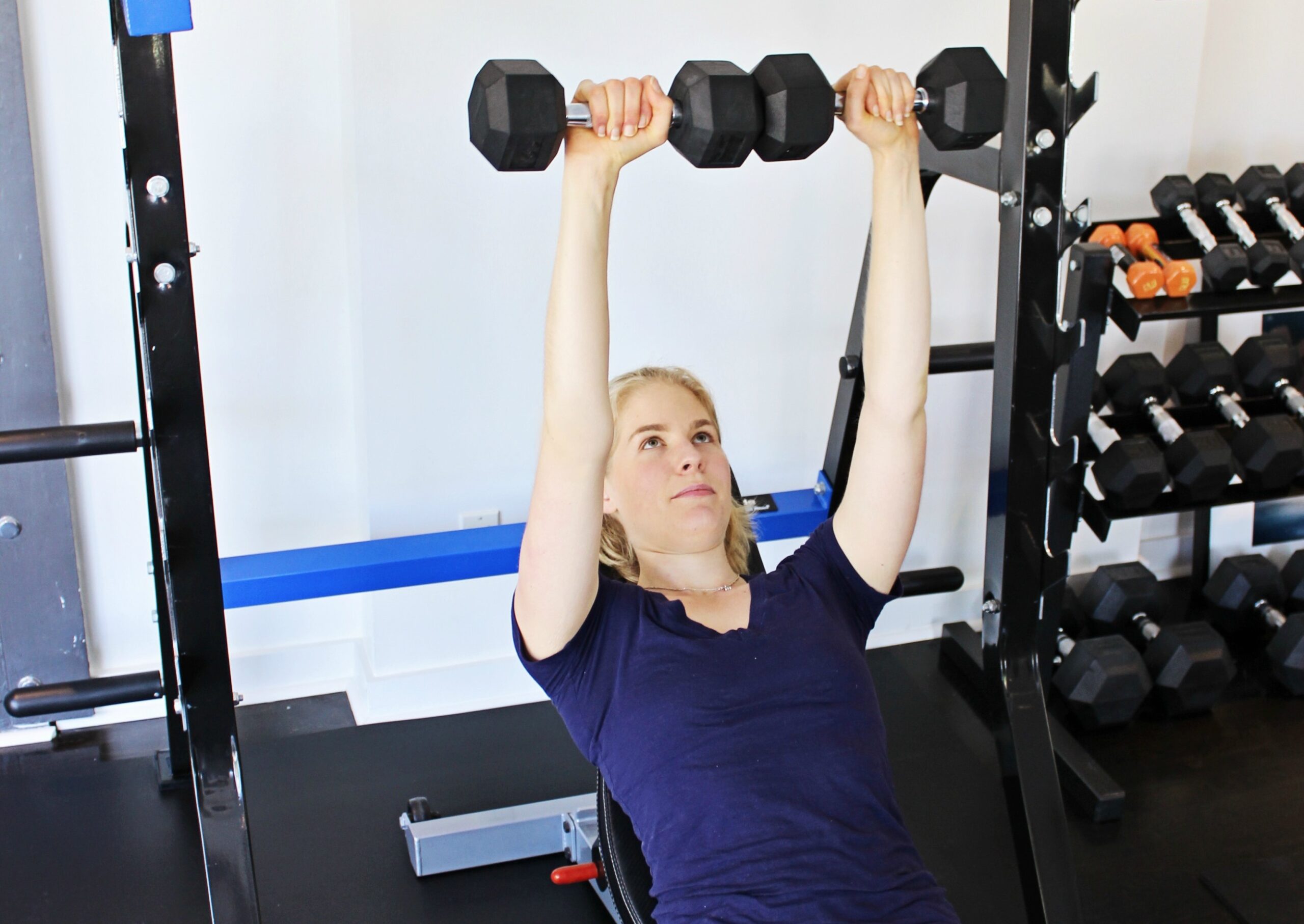Put Your Dumbells to Good Use

Today is THE perfect day to learn the 411 on training with dumbbells!!! Make today YOUR day!!
Strength training 101
-A rep (or repetition) is the act of going one time through an exercise. If your program calls for 15 reps of a squat or 15 biceps curls with dumbbells, you need to squat and/or curl 15 times. Once you complete all of the reps, you have done one set.
-Typically, one does multiple sets of every exercise. Each set is separated by a rest period. To complete three sets of 15 reps, you would do one set, rest, complete another set, rest, then finish your final set.
-I suggest using a repetition range, such as 12 to 15 reps, rather than a specific rep goal (like 15). Start by aiming to complete the lower number. As you get stronger, aim to complete the higher number.
-Don’t work the same muscle group on consecutive days.
-Don’t underestimate the importance of recovery. Exercise is only a positive stress on the body if you give it the tools it needs to recover. Stay hydrated, sleep, eat well, and do daily body self-care activities like stretching and massage.
-Do complex, multi-joint exercises first. For example, do squats before bridges.
-Beginners should only do two sets. As you progress, complete a minimum of three sets.
-To elicit a particular training effect, the weight you use has to be appropriate for the reps completed. For example, eight to 10 is considered a hypertrophy (or mass-building) rep range. If you could do 20 reps, but stop at 10 reps, you will not build mass. Lifting a weight for eight to 10 reps will only create hypertrophy if you lift a weight that you can realistically only lift for eight to 10 reps.
-Regularly change up your routine. I suggest beginners lift a moderate weight for 12 to 15 reps. As you progress, use a heavier weight or manipulate reps, sets, rest periods, exercises, and even tempo. Try lowering and lifting for two counts, or lowering for four counts and powering up.
-Don’t forget to breathe. Don’t laugh! This may sound obvious, but it is commonly forgotten.
-Don’t be afraid to “be aware of your body” after working out — especially if the workout was new. Some positive pain “or muscle soreness” should be expected. Don’t let positive pain deter you from training. In fact, a light cardio workout like walking or light work on the elliptical is a great way to get “active recovery.” Basically, don’t be still if you are sore. Move in a nice light way — promote blood flow. Now, negative pain — nerve pain, numbness, sharp stabbing, and so forth — is an indication that the workout is too aggressive or your form was incorrect. Do not push through negative pain and don’t replicate a workout that causes negative pain. Seek professional guidance if you find your workouts are typically causing you negative pain.
-The training variables that are most typically manipulated are frequency (how often you train), intensity (how hard you work), type (what you do), and time (duration of the workout). This is called the FITT principle. A good rule of thumb to avoid injury and burnout is to only manipulate one of these variables at a time. So, if you increase your intensity (maybe you do intervals), don’t also up the duration and frequency of your workouts at the same time.
-As for frequency, remember to adopt the mindset that “something is always better than nothing.” Start by simply embracing daily motion, no matter how small. Once you have embraced motion, then you can tweak your program.
-Ideally you are aiming to complete the following:
- a cardiovascular workout, such as walking, cycling, or running, that gets your heart rate between 60% and 85% of its max three to five days per week for 20 minutes or more
- a strength workout two to five days day per week depending on muscle group splits (for example, either do full-body workouts twice per week or legs and shoulders one day, chest and back one day, and arms and core another day)
- daily stretching, massage, foam rolling, and other methods of “self-care”
- 10,000 steps per day.
Last, remember, these are ideals — as in eventual goals. Don’t get overwhelmed; that is not productive. Work up to these weekly workout goals. Health is a process not an event.
Originally published at FLAMANFITNESS












